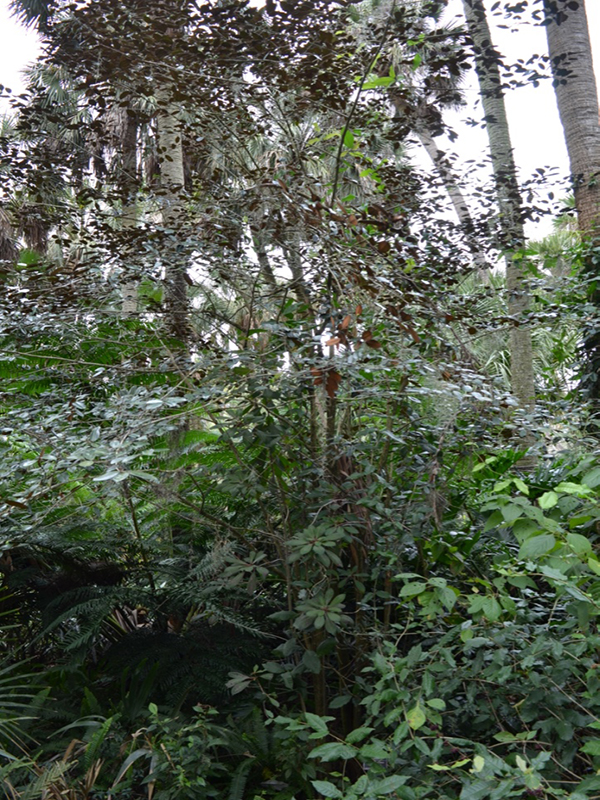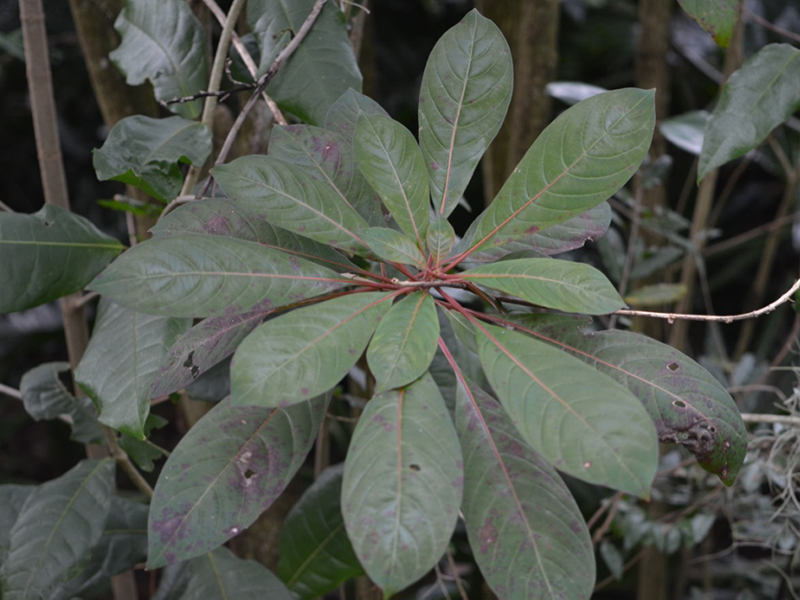
Tropicals, Woody > Chrysophyllum > Chrysophyllum oliviforme > Chrysophyllum oliviforme subsp. oliviforme
Chrysophyllum oliviforme
ssp. oliviforme
Satin Leaf
Origin: Native to southern Florida and the Caribbean.
| Family |
| Sapotaceae |
| Genus |
| Chrysophyllum |
| Species |
| oliviforme |
| Category |
| Tropicals, Woody |
| Type |
| Tree (evergreen) |
| Subspecies |
| oliviforme |
| Synonyms |
| Chrysophyllum acuminatum, Chrysophyllum brachycalyx, Chrysophyllum ferrugineum |
| USDA Hardiness Zone |
| 9b - 11 |
| Canadian Hardiness Zone |
| 10 - 11a |
| RHS Hardiness Zone |
| H3 - H1c |
| Temperature (°C) |
| (-3.8) - 4.5 |
| Temperature (°F) |
| 25 - 40 |
| Height |
| 9 - 12 m |
Photographs
Description and Growing Information
Flowering Period
| General Description |
| Trees have edible fruit, which are generally eaten fresh, provide significant food and some cover for wildlife. |
| Landscape |
| It can be used as a street tree in commercial and residential landscapes. |
| Cultivation |
| Prefers moist to well drained acidic soils. Grows best in full sun to light shade. |
| Growth |
| Fast |
| Bark/Stem Description |
| Trunk straight, slender, to 30 cm in diameter, the wood of the tree is hard, heavy, and strong and thus used in construction. |
| Flower/Leaf Bud Description |
| Cream to tan colour. |
| Leaf Description |
| Adaxial the leaf is dark green while abaxial it is light brown or copper colour. |
| Flower Description |
| The flowers are small, and are a creamy yellow colour. Flowering season is irregular throughout the year but peaks from summer to autumn. |
| Fruit Description |
| Dark purple to black berry, oval. Edible; juicy but sticky. |
| Notable Specimens |
| Bok Tower Gardens, Lake Wales, Florida, United States of America. |
| Propagation |
| Can be grown from de-pulped and scarified seed. |
| Ethnobotanical Uses (Disclaimer) |
| Edible fruit. |

